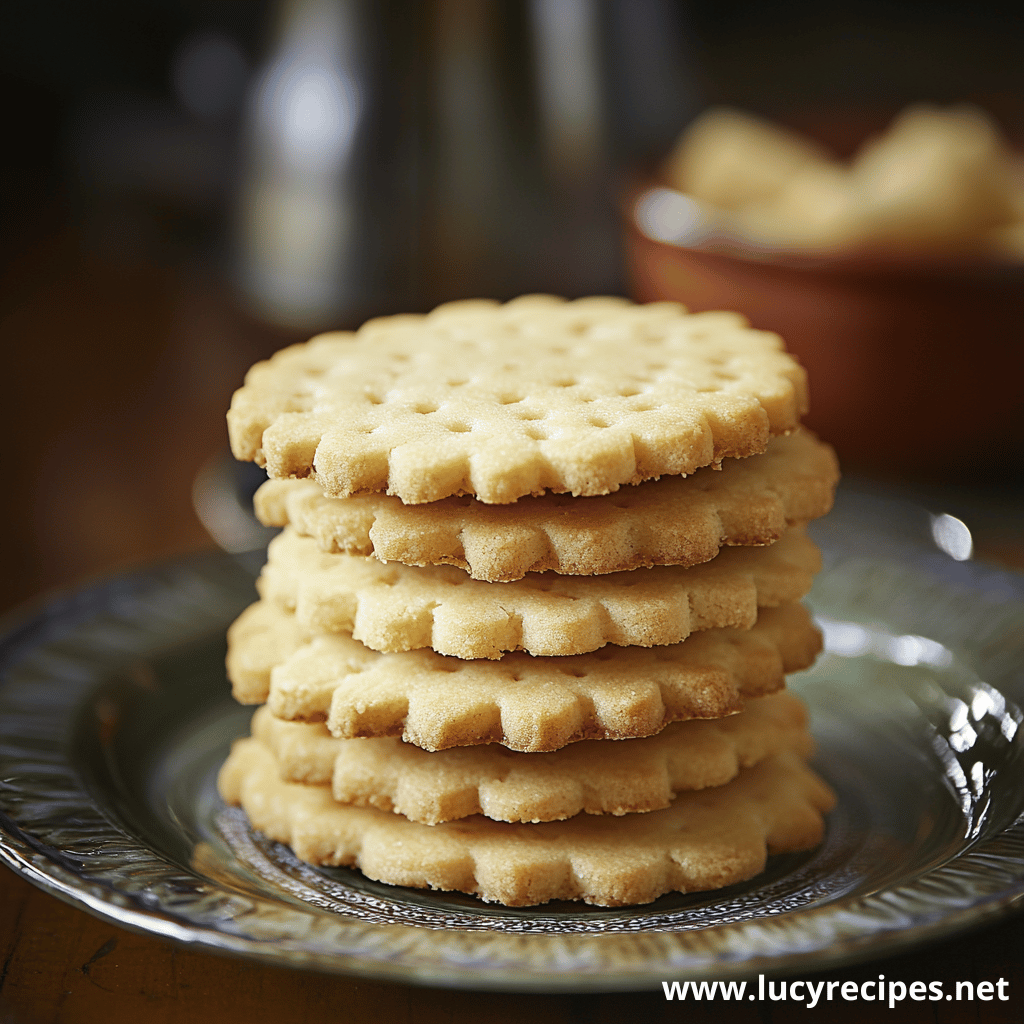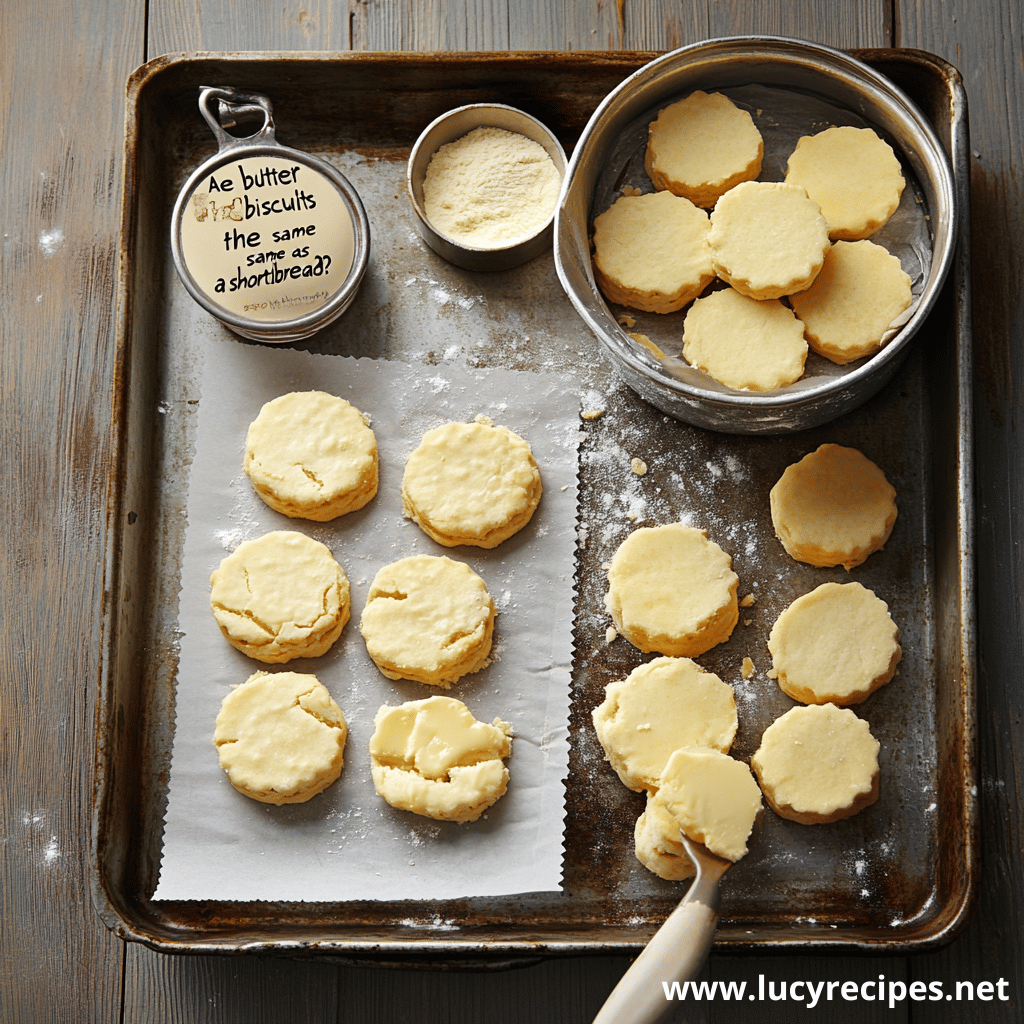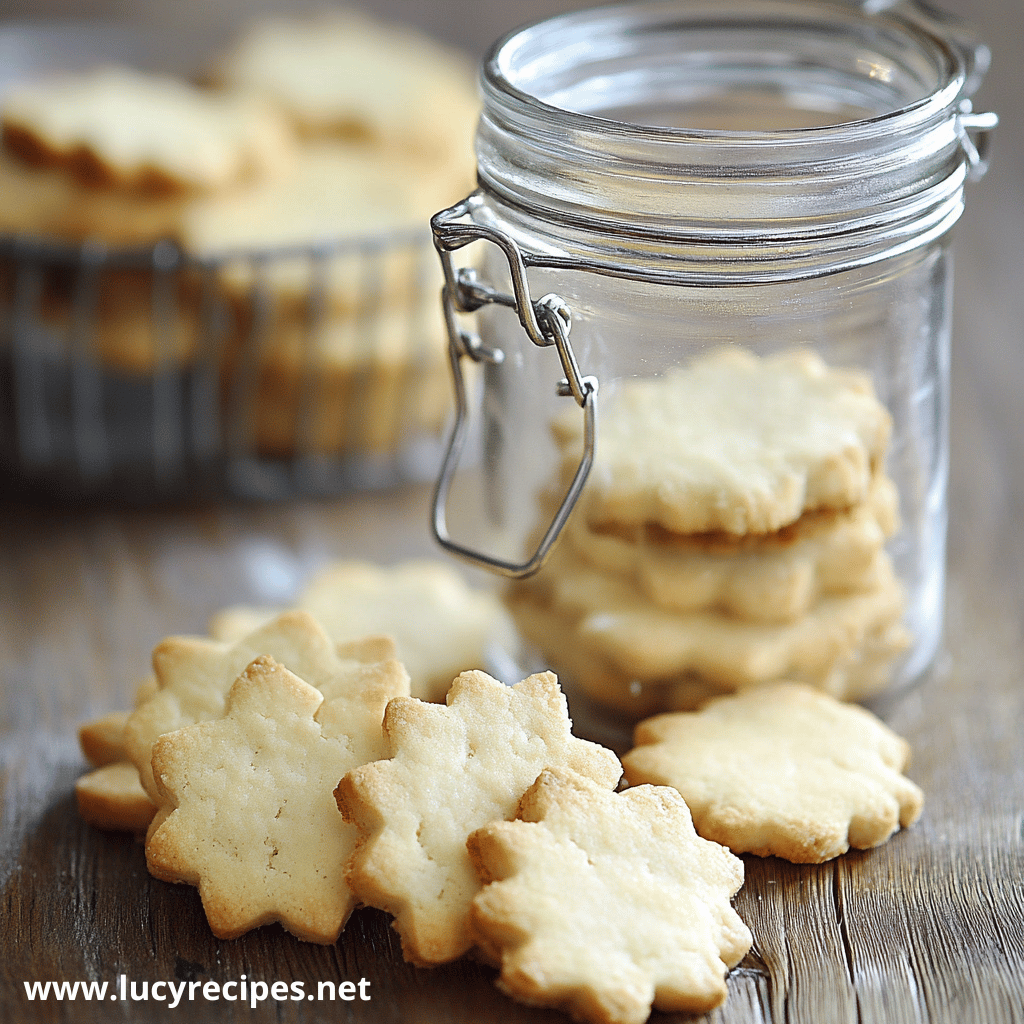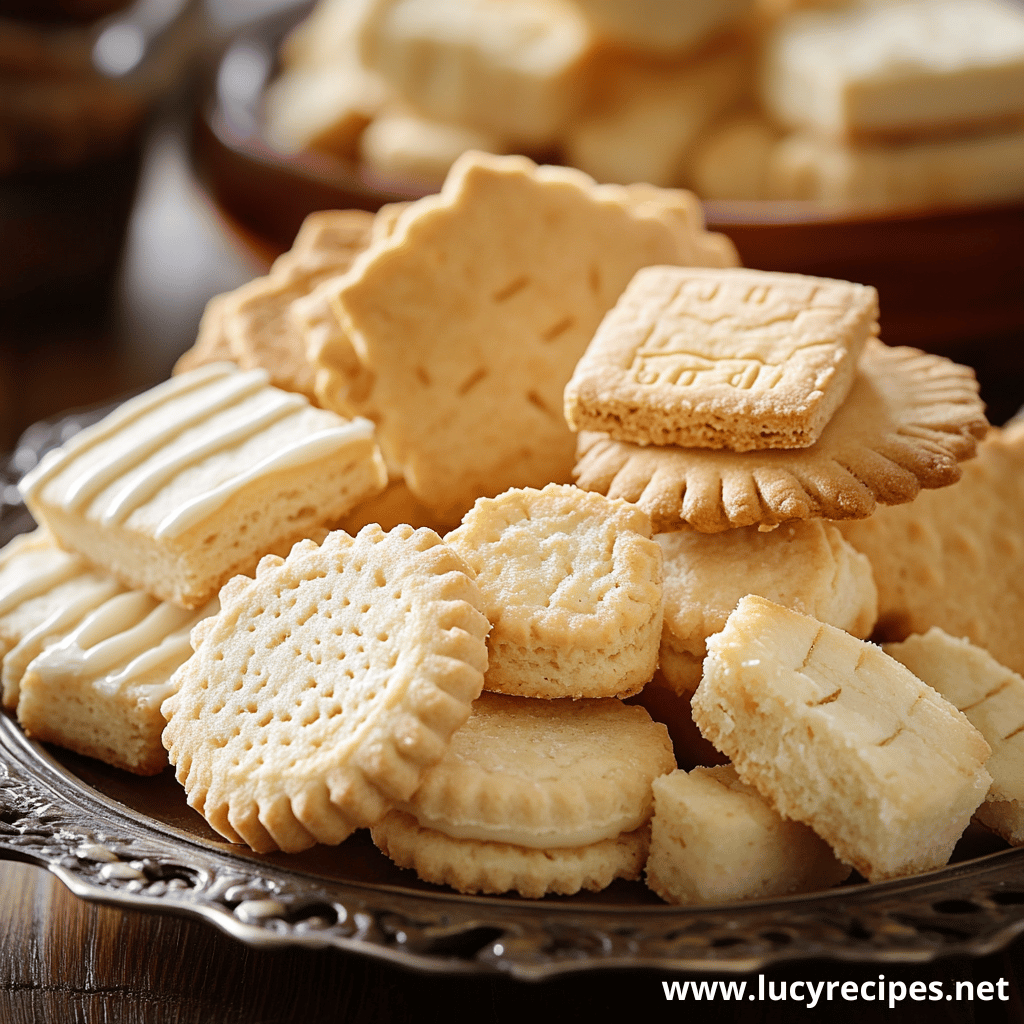Introduction
Are Butter Biscuits The Same As Shortbread? This is a question many dessert lovers ponder, given their similar appearance and shared popularity as sweet treats paired with tea or enjoyed on their own. While butter biscuits and shortbread might seem alike at first glance, they differ significantly in ingredients, texture, and cultural significance. Exploring these distinctions sheds light on their unique characteristics and offers valuable tips for crafting them perfectly. In this article, we’ll delve into their origins, preparation techniques, and defining features to uncover what sets them apart.
Table of Contents
Historical Origins of Butter Biscuit and Shortbread
The history of butter biscuits and shortbread reveals a lot about their evolution. Butter biscuits have a long-standing presence in various cultures, especially in European and American baking traditions. They were originally created as a lighter alternative to bread, designed for portability and longer shelf life. Learn more about seasonal variations in butter biscuit with Butter Biscuits Christmas.
On the other hand, shortbread has its roots in Scotland, dating back to the medieval period. Early forms of shortbread were made from leftover bread dough, enriched with sugar and butter to create a dense and rich texture. By the 16th century, shortbread had become a luxurious treat, often reserved for special occasions.
Though both share the use of butter as a primary ingredient, their histories show that shortbread was intended as a premium indulgence, while butter biscuits were designed for everyday enjoyment.
Key Ingredients in Butter Biscuit vs. Shortbread
To determine whether butter biscuits are the same as shortbread, examining their ingredients is essential. While both rely on butter, flour, and sugar, the proportions and additional components set them apart.
- Butter Biscuit:
- Typically include baking powder or soda to create a lighter texture.
- May contain milk, eggs, or other liquids to enhance moisture.
- Sugar is often less concentrated compared to shortbread.
- Shortbread:
- Primarily made with three ingredients: butter, sugar, and flour.
- Lacks any leavening agents, which gives it a denser texture.
- Uses a higher butter-to-flour ratio, resulting in a rich, crumbly bite.
This distinction in ingredients highlights why butter biscuits are airy and tender, while shortbread is denser and more buttery.
Texture and Flavor Profiles: A Comparison
The textures and flavors of butter biscuit and shortbread differ significantly due to their unique ingredient ratios and preparation methods.
- Butter biscuits are known for their:
- Light, flaky texture due to the inclusion of leavening agents.
- Subtle sweetness that pairs well with jams or toppings.
- Shortbread, however, boasts:
- A rich, crumbly texture that melts in your mouth.
- A pronounced buttery flavor, enhanced by its simplicity.
This textural difference often sparks debates like, “Are butter biscuits the same as shortbread?” The answer lies in the contrasting eating experience, where butter biscuit feel lighter, and shortbread provides a more indulgent richness.
Baking Techniques: Butter Biscuit vs. Shortbread

Baking techniques also play a crucial role in differentiating butter biscuits from shortbread. Though both require precision, their methods emphasize different goals.
- Butter Biscuits:
- Dough is often rolled out and cut into shapes, ensuring an even bake.
- The use of cold butter and minimal mixing creates layers and flakiness.
- Baking temperatures are slightly higher to achieve a golden, crispy exterior.
- Shortbread:
- Dough is gently pressed into pans or shaped into rounds to maintain its structure.
- Requires chilling before baking to prevent spreading and ensure a crumbly texture.
- Baked at lower temperatures to avoid browning and preserve its pale color.
These varied techniques explain why butter biscuits are not the same as shortbread. Each demands specific steps to highlight its unique characteristics.
Cultural Significance and Usage
Butter biscuit and shortbread hold different places in cultural traditions.
- Butter biscuits are versatile and widely consumed across cultures. They are often paired with beverages like tea or coffee, making them a daily staple. If you’re curious about their cultural names, check out What Are Butter Biscuits Called?.
- Shortbread, however, is deeply tied to Scottish heritage. It is a traditional treat during celebrations like Hogmanay and weddings. Gifting shortbread is considered a gesture of goodwill.
While both are beloved, their cultural roles further demonstrate why they are distinct. Asking, “Are butter biscuits the same as shortbread?” underscores the diverse ways they are cherished worldwide.
Nutritional Comparison:
When comparing the nutritional profiles of butter biscuit and shortbread, key differences emerge due to ingredient variations.
- Butter Biscuits:
- Generally lower in calories and fat due to reduced butter content.
- May contain slightly more protein if eggs or milk are included.
- Typically have a higher carbohydrate count due to added leavening agents.
- Shortbread:
- Higher in calories and fat, as butter dominates the recipe.
- Contains fewer additives, making it a purer but richer option.
- Lower in protein and fiber, offering minimal nutritional value.
These differences reveal that butter biscuits are a lighter option, while shortbread leans towards indulgence. Understanding this helps bakers and consumers make informed choices.
Common Myths and Misconceptions
Misconceptions often blur the lines between butter biscuit and shortbread. Let’s debunk a few:
- “Butter biscuits and shortbread are interchangeable.”
- While they share similar ingredients, their textures, flavors, and uses differ significantly.
- “Shortbread requires eggs for richness.”
- Traditional shortbread does not use eggs; its richness comes solely from butter.
- “Butter biscuits cannot be crumbly.”
- With careful preparation, butter biscuit can achieve a delicate balance of flakiness and crumbly texture.
Understanding these myths provides clarity, reinforcing why butter biscuits are not the same as shortbread.
For a fun take on biscuit-related expressions, visit What Does Butter a Biscuit Mean?
How to Make Butter Biscuit and Shortbread at Home
Making these treats at home is an enjoyable way to appreciate their unique qualities. Below are simple guides for each:
- Butter Biscuits:
- Preheat the oven to 200°C (400°F).
- Mix 2 cups of flour, 1 tbsp sugar, 1 tbsp baking powder, and a pinch of salt.
- Cut in 1/2 cup of cold butter until the mixture resembles crumbs.
- Add 3/4 cup of milk or buttermilk, mixing until just combined.
- Roll out the dough, cut into shapes, and bake for 12-15 minutes.
- Shortbread:
- Preheat the oven to 160°C (325°F).
- Cream 1 cup of softened butter with 1/2 cup of sugar until fluffy.
- Slowly mix in 2 cups of flour until a dough forms.
- Press the dough into a pan or shape into rounds, then chill for 30 minutes.
- Bake for 30-35 minutes, ensuring the shortbread remains pale.
By mastering these recipes, bakers can fully appreciate the differences that make butter biscuit and shortbread unique.
Tips for Perfect Results

To achieve the best results when baking butter biscuits or shortbread, it’s important to pay attention to the details. Both recipes rely on precision, but their differences require unique approaches.
- Always use high-quality butter for both, as it is the star ingredient.
- For butter biscuits:
- Ensure your butter is cold to create a flaky texture.
- Handle the dough as little as possible to avoid overworking it.
- Use a sharp cutter to retain the biscuit’s edges.
- For shortbread:
- Let the dough chill before baking to preserve its structure.
- Use a low baking temperature to maintain the pale color.
- Dock the dough with a fork to prevent uneven rising.
These tips ensure that your creations stay true to their intended textures and flavors. Asking, “Are butter biscuits the same as shortbread?” underscores the importance of adapting techniques to each.
The Science Behind Baking Butter Biscuits and Shortbread
Understanding the science behind these baked goods helps highlight why butter biscuits are not the same as shortbread. Their distinct structures come from differing ingredient functions.
- In butter biscuits:
- Baking powder or soda releases gas during baking, creating a light and airy texture.
- Cold butter forms steam pockets, leading to flakiness.
- Mixing liquids with flour activates gluten, which provides elasticity.
- In shortbread:
- The absence of leavening agents keeps the texture dense and crumbly.
- A higher butter ratio inhibits gluten development, resulting in a tender bite.
- Low baking temperatures reduce moisture loss, enhancing richness.
This scientific distinction explains why their textures differ despite using similar ingredients.
Regional Variations of Butter Biscuits and Shortbread
Around the world, butter biscuits and shortbread are prepared with unique twists, reflecting local tastes and traditions.
- Butter Biscuits:
- In the U.S., they are often made with buttermilk, resulting in a tangy flavor.
- In India, Nankhatai serves as a buttery biscuit variant, flavored with cardamom or nuts.
- European variations may incorporate cheese or herbs for a savory profile.
- Shortbread:
- Scottish shortbread is the most famous, often shaped into rounds or wedges.
- In Ireland, shortbread is enriched with Irish butter, giving it an ultra-creamy flavor.
- Scandinavian versions may include almond flour for a nuttier taste.
These variations emphasize the diversity of recipes and traditions, making it clear that butter biscuits are not the same as shortbread, especially in regional contexts.
Pairing Butter Biscuits and Shortbread with Beverages
The right beverage pairing can enhance the flavors of butter biscuits and shortbread. Their textures and sweetness levels influence the best pairings.
- Butter biscuits:
- Pair well with tea or coffee due to their light and neutral flavor.
- Sweetened biscuits complement hot chocolate or milk for a comforting treat.
- Savory variants are ideal with herbal teas or even wines.
- Shortbread:
- Its rich, buttery flavor pairs beautifully with Earl Grey or Darjeeling tea.
- A glass of dry champagne balances the sweetness of shortbread during celebrations.
- For a cozy pairing, try hot spiced cider or mulled wine.
Such pairings elevate the experience of enjoying these treats, answering, “Are butter biscuits the same as shortbread?” in terms of culinary enjoyment.
Storage Tips for Butter Biscuits and Shortbread

Proper storage is essential to maintain the freshness and texture of butter biscuits and shortbread. Their buttery nature makes them prone to spoilage if not stored correctly.
- Butter biscuits:
- Store in an airtight container at room temperature for up to 5 days.
- Freeze unbaked dough or baked biscuits for longer storage, up to 3 months.
- Avoid exposure to humidity, which can make them soggy.
- Shortbread:
- Keep in a tin or airtight container to prevent moisture absorption.
- Refrigerate for up to two weeks to preserve freshness.
- Freeze baked shortbread for up to 6 months without affecting its texture.
Understanding these storage nuances reinforces the idea that butter biscuits are not the same as shortbread, especially in terms of shelf life.
The Economic Impact of Butter Biscuits and Shortbread Production
The production of butter biscuits and shortbread contributes significantly to the global baking industry. Their economic impact highlights their popularity and versatility.
- Butter Biscuits:
- Mass-produced butter biscuits are affordable and widely available, making them a staple in grocery stores.
- Local bakeries often customize them, creating niche markets.
- They form a major export product for countries with strong biscuit industries.
- Shortbread:
- Premium shortbread brands like Walker’s export globally, emphasizing quality over quantity.
- Artisanal shortbread is popular in specialty stores and during festive seasons.
- Shortbread production often supports regional economies, especially in Scotland.
These economic factors underline their distinct roles, showing why butter biscuits are not the same as shortbread in commercial contexts.
Innovations in Butter Biscuit and Shortbread Recipes
Modern bakers continue to innovate, reimagining butter biscuit and shortbread recipes with creative twists.
- Butter Biscuits:
- Gluten-free versions use almond or oat flour for dietary inclusivity.
- Savory biscuits with cheese, herbs, or spices cater to diverse palates.
- Layering techniques mimic croissants for a hybrid pastry.
- Shortbread:
- Flavored varieties include lavender, matcha, or chocolate.
- Vegan shortbread swaps butter for plant-based alternatives like coconut oil.
- Decorative shortbread incorporates patterns or shapes, elevating presentation.
These innovations keep both butter biscuits and shortbread relevant, proving that their differences spark endless culinary possibilities.
FAQs
- Are butter biscuits the same as shortbread?
- No, they differ in texture, ingredients, and preparation methods. Butter biscuits are lighter, while shortbread is denser and richer.
- Can I substitute butter biscuits for shortbread in recipes?
- Substitutions may work in some cases, but the textural and flavor differences could alter the outcome.
- Which is healthier: butter biscuits or shortbread?
- Butter biscuits are generally lighter in calories, while shortbread is richer due to its high butter content.
- What makes shortbread crumbly?
- The absence of leavening agents and a high butter-to-flour ratio contribute to its crumbly texture.
- Can I freeze butter biscuit and shortbread?
- Yes, both freeze well. Butter biscuits freeze best unbaked, while shortbread can be frozen after baking.
Conclusion: Butter Biscuit vs. Shortbread
In summary, butter biscuits and shortbread may share similar roots but differ significantly in ingredients, texture, and preparation. From their regional variations to their economic impact, these baked goods offer distinct experiences. The next time you ask, “Are butter biscuits the same as shortbread?” consider their unique qualities and enjoy them for what they are—delicious treats with their own charm.


2 thoughts on “Butter Biscuits vs. Shortbread: Key Differences, Recipes, and Tips”
Comments are closed.